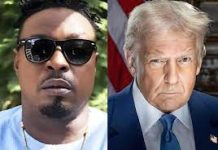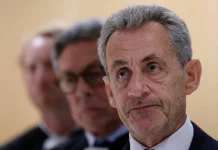In true dealmaker fashion, President Donald Trump pulled off a dramatic economic play on July 30, 2025, sealing a high-value trade agreement with South Korea just hours before his much-hyped August 1 tariff ultimatum was set to trigger sweeping levies on U.S. trading partners.
The pact, a product of frantic negotiations, saved South Korea from steep 25% tariffs and positioned both nations for a new era of high-stakes commerce. Trump’s move turned what could have been a global economic jolt into a headline-grabbing win.
Inside the Deal: What’s on the Table
15% Tariff Ceiling: South Korean imports to the U.S. will now face a capped 15% tariff—a soft landing compared to the looming 25% threat from Trump’s “Liberation Day” tariff blitz.
Free Entry for American Goods: U.S. products—such as autos, beef, soybeans, and more—enjoy duty-free access into South Korea, a significantcan exporters.
Mega Investment Pledge:
$350 billion in South Korean investment into the U.S., to be directed toward White House‑approved sectors.
$100 billion earmarked for U.S. energy exports over the next three-and-a-half years—primarily LNG, crude oil, and LPG.
High-Tech Investment Targets: The agreement focuses on strategic sectors such as semiconductors, batteries, biotechnology, shipbuilding, and nuclear infrastructure—solidifying U.S.-Korea ties in key the future.
Some Sectors Left Out: Tariffs on steel, aluminum, and select electronics remain untouched—for now.
The Political Playbook
Crisis or Coup? As the August 1 deadline loomed, Trump orchestrated a whirlwind of backchannel talks and last-minute diplomacy, showcasing his penchant for brinkmanship over bureaucracy.
South Korea Scores: Newly inaugurated President Lee Jae-Myung called the agreement a “stabilizer,” removing tariff uncertainty and restoring competitiveness for Korean exports on the global stage.
Part of a Bigger Puzzle: This South Korea accord follows similar last-minute trade deals Trump clinched with Japan, the EU, ASEAN, and ongoing talks with India, Canada, and Mexico—all part of his pressure-cooker diplomacy ahead of the deadline.
Industry Moves and Market Mood
Corporate Quickfire: South Korea’s industrial giants—Samsung, Hyundai, and LG Energy—moved swiftly, securing major new contracts with Tesla and other U.S. firms for batteries and chips, worth billions.
Wall Street Watches: Markets responded with cautious optimism. While economists lauded the economic boost, they warned of growing unpredictability tied to Trump’s clock-ticking negotiations.
Promise of Prosperity: U.S. Commerce Secretary Howard Lutnick emphasized that 90% of the investment returns would “flow directly to the American people,” reinforcing the administration’s populist messaging.
Fast Facts Snapshot
| Factor | Details |
|---|---|
| Tariffs | 15% cap on Korean imports; zero duties on U.S. exports to South Korea |
| Investment | $350B in inbound investment; $100B energy buy from U.S. |
| Strategic Sectors | Semiconductors, biotech, batteries, shipbuilding, nuclear tech |
| Timing | Deal announced less than 48 hours before tariff wave |
| Diplomatic Ripples | Part of global strategy to clinch deals before “Trump Tariff D-Day” |
































